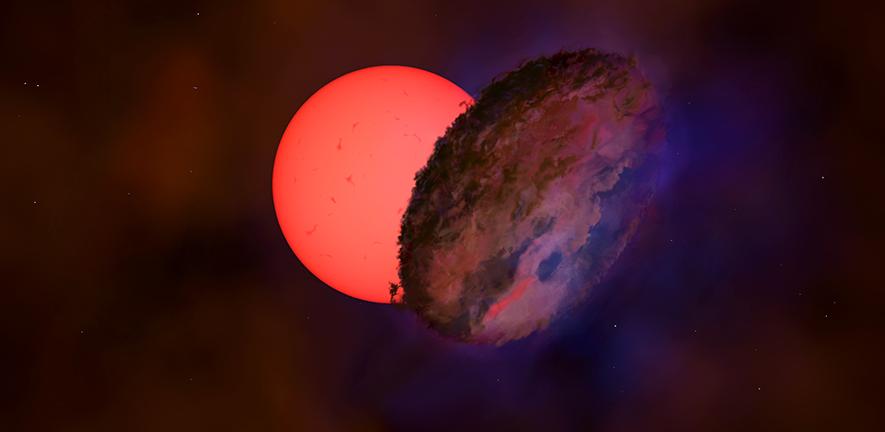Strange 'blinking' star near heart of Milky Way catches scientists' eyes

It's always a good sign when astronomers are blunt about how observations have puzzled them.
One such confusing object, discovered by a project called the VISTA Variables in the Via Lactea survey, or VVV, appears to be just the second of its kind known to scientists — and a kind that appears to be particularly dramatic, according to new research. That's the conclusion of a team of scientists who spotted a bright star that nearly disappeared before their very eyes.
"Occasionally we find variable stars that don't fit into any established category, which we call 'what-is-this?', or 'WIT' objects," co-author Philip Lucas, an astronomer at the University of Hertfordshire in the U.K., said in a statement. "We really don't know how these blinking giants came to be. It's exciting to see such discoveries from VVV after so many years planning and gathering the data."
Related: The brightest stars in the sky: A starry countdown
The team of astronomers focused on observations of an object dubbed VVV-WIT-08 for the survey that discovered it. The strange sight is more than 25,000 light-years away from Earth in the direction of the center of the Milky Way, and the researchers were able to see them with not just the VVV project, but also the Optical Gravitational Lensing Experiment (OGLE).
Having dug into the measurements, scientists now suspect that the object is one massive star, 100 times larger than the sun, that is periodically blocked by a smaller companion object surrounded by an opaque disk.
What precisely that smaller object is, scientists don't know yet.
Breaking space news, the latest updates on rocket launches, skywatching events and more!
"It's amazing that we just observed a dark, large and elongated object pass between us and the distant star and we can only speculate what its origin is," co-author Sergey Koposov, an astronomer at the University of Edinburgh in the U.K., said in a statement.
The VVV-WIT-08 observations mark the second time that scientists have seen this particular pattern; the brightness of a massive star known as Epsilon Aurigae halves every 27 years when a dust cloud passes between observers and the star. Another example dims every 69 years, and the researchers who studied VVV-WIT-08 have so far found two more of these strange objects, which they've dubbed "blinking giant" stars.
That brings the total of such observed objects to five, although scientists expect there are others to be detected.
"There are certainly more to be found, but the challenge now is in figuring out what the hidden companions are, and how they came to be surrounded by discs, despite orbiting so far from the giant star," lead author Leigh Smith, an astronomer at Cambridge University in the U.K., said in the statement. "In doing so, we might learn something new about how these kinds of systems evolve."
The research is described in a paper published Friday (June 11) in the journal Monthly Notices of the Royal Astronomical Society.
Email Meghan Bartels at mbartels@space.com or follow her on Twitter @meghanbartels. Follow us on Twitter @Spacedotcom and on Facebook.

Meghan is a senior writer at Space.com and has more than five years' experience as a science journalist based in New York City. She joined Space.com in July 2018, with previous writing published in outlets including Newsweek and Audubon. Meghan earned an MA in science journalism from New York University and a BA in classics from Georgetown University, and in her free time she enjoys reading and visiting museums. Follow her on Twitter at @meghanbartels.
